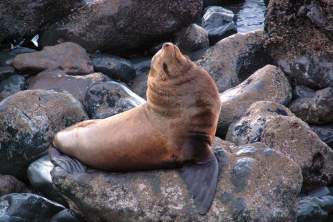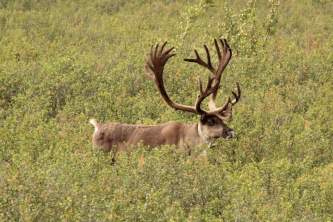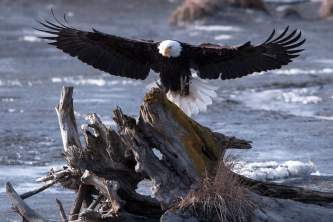Moose Courtesy
Moose are a routine part of life for most Alaskans. These massive, hulking creatures jog through soccer and baseball fields, wander neighborhoods in the morning-making paperboys cut short their routes—and nonchalantly cross highways, forcing motorists to wait.
While moose are happy to pose for a picture or two, give them lots of room, especially when calves are nearby. But they generally ignore people activities. They're more interested in food—young trees, mainly. Moose don't eat meat, but many Alaskan animals find moose to be tasty; they're a favorite of bears, wolves.and humans. Each year, hunters bag 6,000-8,000 Alaskan moose—that's 3.5 million pounds of lean meat. A family can enjoy steaks all winter long, courtesy of a single moose.
Mosquitoes pester moose constantly, and if you see a moose jump spastically in and out of water, it's their version of applying bug spray. Mating season comes in fall, and boys impress ladies by pitting antler against antler.
In winter, finding food is difficult, and moose flood the low areas, often taking refuge in cities-Anchorage's wintertime population can triple, to just under 1,000. There, the moose live off the locals' landscaping efforts, eating mountain ash and birch trees. Many an Alaskan wakes up in the morning to find the trees in his front yard destroyed. Little do they know the culprit's curled up alongside the house, sleeping next to a heating vent.
Moose Courtesy
- Never feed moose
- Give moose at least 50 feet. If it doesn't yield as you approach, give it the trail. (Either retreat or walk way around.)
- If its ears lay back or its hackles (the hairs on its hump) rise, it's angry or afraid and may charge; back off pronto
- Moose kick with their front as well as hind feet
- Don't corner moose into fences or houses
- If a moose charges, get behind a tree. You can run around the trunk faster than the gangly creature.
- Never get between a cow and her calf




